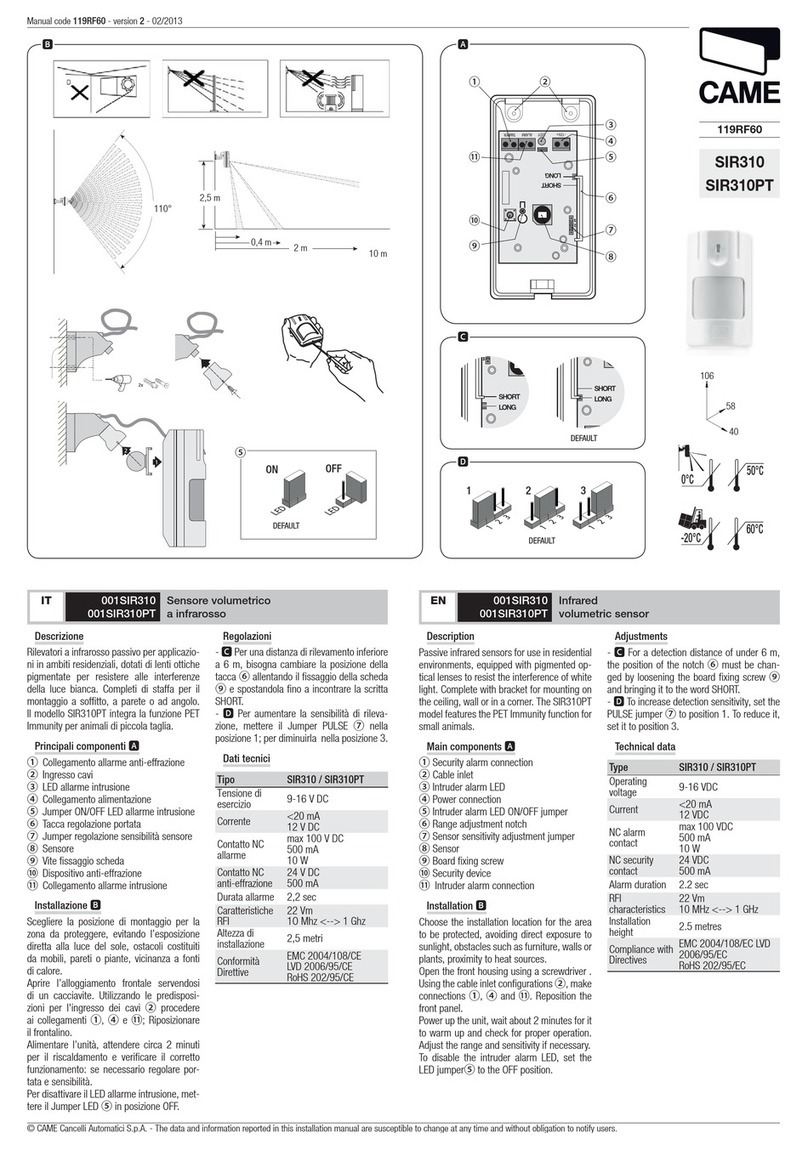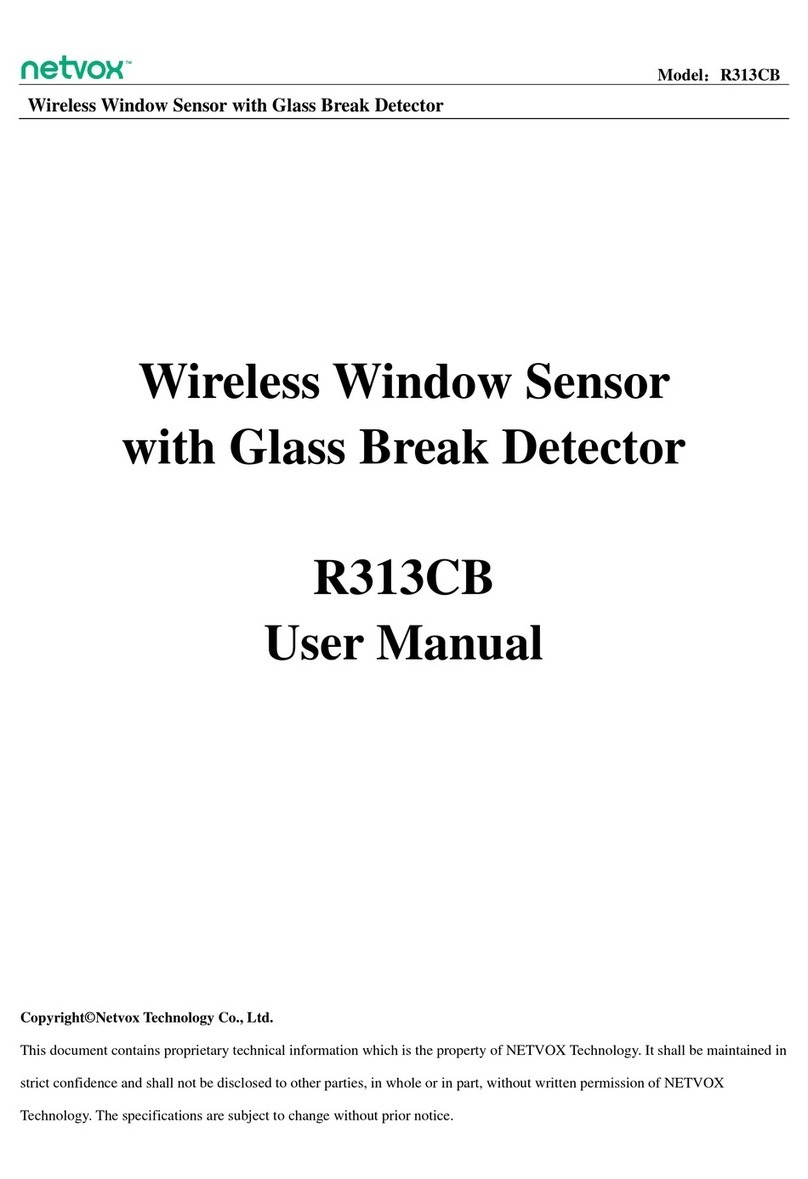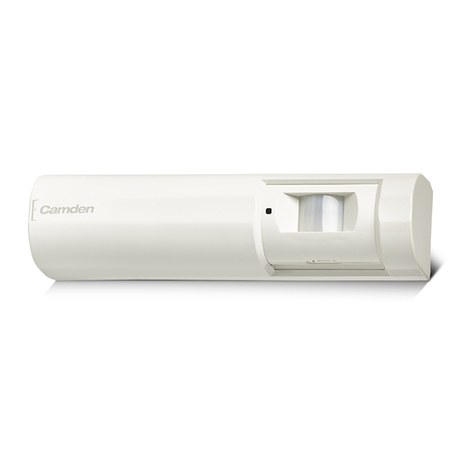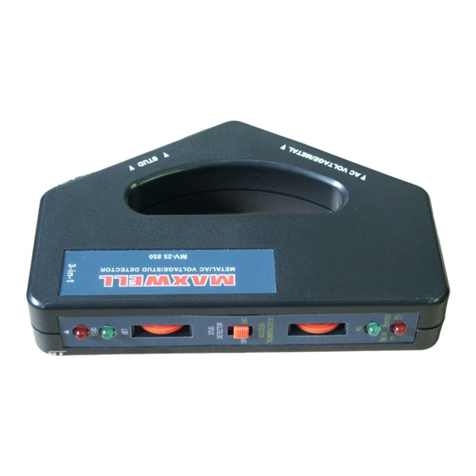Helm TMG-1200 User manual

Helm Instrument Company, Inc.
361 West Dussel Drive
Maumee, Ohio 43537 USA
419/ 893-4356
Fax: 419/ 893-1371
www.helminstrument.com
Non Contact Fault Detector
For Cold Heading Machines
Force Measurement and Control Solutions

Page 1
TMG-1200 Instruction Manual
Table of Contents
Introduction................................................................................................2
Basic Operation
Description of Component Parts..................................................................3
Normal Operation.........................................................................................6
Changing Preset Range...............................................................................7
Operation of Counter ...................................................................................8
Specifications...............................................................................................9
Applied Operation
Mean Value and Absolute Value..................................................................10
Details of Detection......................................................................................13
Slowdown Detection ....................................................................................13
External Timing............................................................................................13
Details of System Setting.............................................................................14
Maintenance
Connection of Terminal Block......................................................................16,17
Sensor Installation .......................................................................................18
Sensor Adjustment.......................................................................................19
Troubleshooting Guide.................................................................................20
We would like to thank you for purchasing the TMG-1200 non-contact monitor. This guide
consists of four parts: Introduction, Basic Operation, Applied Operation and Maintenance. Prior
to operation, please read the TMG-1200 guide thoroughly.

Introduction
The TMG-1200 detects the “Front Dead Center” (FDC) positions of the cold former using a
proximity sensor and sends a fault signal to the output when the difference between FDC
positions at each stroke exceeds the preset range. The TMG-1200 will send a fault signal to the
output when the revolutions (rpm) of the cold header or cold former fall below the preset range
when slowdown detection is set to On.
Fault detection of FDC position is performed in two modes - Adaptive (mean value) comparison
and Trend (absolute value) comparison. For each of these modes, it is possible to preset the
operating range. Slowdown detection can be set in units of 1% in the range of –5% to –49%.
Header
Former Sensor Signal Header
Former Monitoring by both Absolute
value and Mean value
Slowdown monitoring
Fault Detection Signal
(Stop Signal)
This device meets the requirements for the single, double and multi modes according to the types
of cold header and cold former.
The single mode is for single stroke, single die machines.
The double mode is for single stroke, double die machines.
The multi mode is a multi-slide or progressive header (Two sensors are necessary only in the
case of using the multi mode.) The TMG-1200 can be setup for operation in any of these modes.
Refer to the contents of Section “System Setting”.
One Stroke
One Die
One Stroke Two
Two Die One Stroke
Two Die
Multi-Slide or
Progressive
Header
The device is factory set in the double mode. The set point setting and system setting are preset
at the factory. System can start at installation.
Page 2
TMG-1200 Instruction Manual

Description of Component Parts
TMG Monitor
RIKEN OPTECH CORPORATION
ON/OFF
INSTRUMENT CO., INC.
MAUMEE, OHIOU.S.A.
B.C RESET
SAMPLING
ADAPTIVE/TREND
P.C SELECT
P.C SELECT
SETUP
SETUPDIAL
CONTRAST
RESET
ADAPTIVE/TREND
ON/OFF
ADAPTIVE
+ 0 0
+ 0 0
BATCH C
321
PRESET COUNTER
87654321
R.P.M
1000 PARTS COUNTER
87654321
ADAPTIVEADAPTIVE
TIMING
SAMPLING
14
19
15
16
17 20
5
987
6
11
11
12
13 10
4
12
14
18
3
1. Deviation display (unit: µm)- Displays the deviation detected by the proximity sensor. It is
factory set for adaptive (mean value ) display.
2. Set point display - Displays the monitoring range between the upper and lower limits. When
the display shows a deviation exceeding the limit values, the TMG-1200 displays a fault
condition.
3. Bar display – Displays the deviation from the set point. The left side of the bar display is the
“-“ (negative) side of the set point and the right side the “+” (positive) side. The center square
is the “0” position, and the two sides are divided each into five equal parts. For example,
when the set point is 10, the display is as shown below:
-10 -8 -6 -4 -2 0 +2 +4 +6 +8 +10
Bar Display Scale (Unit: µm)
When the set point is less than 5, the display will show 5.
The bar display during set point setting serves as a clearance gauge to indicate the FDC
position (refer to section “Sensor Adjustment”).
Page 3
TMG-1200 Instruction Manual

Page 4
TMG-1200 Instruction Manual
4. RPM Display
Displays the rpm's of the cold header and cold former in real time.
5. Batch counter
A 3-digit counter which counts the number of times that the preset counter has counted up.
6. Parts counter
An 8-digit preset counter which does not perform counting while detection is off.
7. Preset counter set point
Shows the set point of the preset counter.
8. Trend value sampling display
Indicates that sampling of Trend data, for absolute value detection, is not complete or
sampling is being performed.
9. External timing indicator
Indicates when the external timing is on.
10. Comment column
Shows the current fault or operational state.
11. ON/OFF button
The button to turn on or off fault detection by deviation. When fault detection is off, “OFF” is
shown on the set point display.
12. Batch counter reset button
Push this button to reset the batch counter to “0”.
13. Sampling button
Press Sampling button to start sampling Trend data for reference data during operation.
During sampling, “Sampling” appears on the screen.
14. Adaptive/Trend button
The button to select whether to cause the deviation display to show the absolute value or
mean value. Which of them is selected is indicated by “Adaptive” or “Trend” on the lower
side of #2 – Set point display. The button is factory set for mean value display.
15. Preset counter reset button
Push this button to reset the preset counter to “0”.
16. Preset counter select button
Push this button to set the point of the preset counter (refer to section “Operation of
Counter”).
17. Setup button
Push this button to change the set point (refer to section “Changing Preset Range).
18. Setup dial
Used to change the set point or to change settings in the system mode.
19. Contrast control
Used to adjust the contrast of the Liquid Crystal Display (LCD) screen. The contrast control
is factory adjusted. Readjust it when the screen is difficult to see.

Page 5
TMG-1200 Instruction Manual
20. Reset button
When a fault is detected, the red lamp goes on to notify of a fault condition. Pushing this
button cancels the fault condition and causes the red lamp to go off. In normal operation,
pushing this button causes the red lamp to flash and turns off fault detection. Pushing it
again stops flashing of the red lamp and cancels the bypass state.

Page 6
TMG-1200 Instruction Manual
Normal Operation
Normal operation does not require any special procedure. However, some procedures need to
be performed when detection is by-passed for setup or for turning on/off wire feed during
continuous operation. The procedures are described below.
1. At setup for material supply, etc., press the Reset button to cause the TMG-1200 to go to the
by-pass state. Push the reset button again cancels the bypass state.
2. When the machine is operated in the continuous mode, the TMG-1200 automatically starts
detection after 10 strokes. During the initial 10 strokes after the start of the machine, fault
detection is automatically by-passed to prevent erroneous detection due to the initial
instability of the machine. (The number of times that detection is turned off can be changed
by system setting.)
3. When the deviation exceeds the set point during continuous operation, the TMG-1200 issues
a machine stop fault condition and red lamp of the reset button goes on indicating that the
machine has stopped.
4. Pushing the reset button turns off the red lamp and cancels the fault detection condition. The
numerical display of abnormal value etc., is maintained as it is.
5. To change the set point, refer to the next section “Changing Preset Range”.

Changing Preset Range
The set point can be changed when necessary by pushing the setup button, regardless of
whether the machine is in the stop state or in continuous mode. The black and white colors on
the set point display are inverted, so turn the setup dial to change the display to an arbitrary
value.
In this case, “Adaptive” or “Trend” appears on the lower side of the set point display, indicating
the respective set points.
Set the set point display to the display type to which you wish to change it, and then turn the
setup dial.
To change from mean value (adaptive) display to Trend (absolute value) display or vice versa,
push the “Absolute/Trend” button on the right side of the respective displays.
Page 7
TMG-1200 Instruction Manual
ADAPTIVE/TREND
SETUP DIAL
ADAPTIVE/TREND
ADAPTIVE
10
10
ADAPTIVEADAPTIVE
G Monitor
CH1 Set point Display
CH2 Set point Display
CH2 Trend/Adaptive Button
CH1 Absolute Value/Mean Value Display
CH2 Absolute Value/Mean Value Display
CH1 Trend/Adaptive Button
Trend/Adaptive Setup Dial
Set table range: Absolute Value: 0 to 500 µm (in units of 10 µm.)
Mean Value: 0 to 99 µm (in units of 1 µm.)
•Setting the absolute value to "0" turns off absolute value detection.

Page 8
TMG-1200 Instruction Manual
Operation of Counter
This device incorporates an 8-digit counter which uses the sensor signal to count one per stroke.
The operating procedure is described below.
1. Setting of preset value
a) Push the counter setup button to set the device in the preset setup mode. (Black-white
inversion occurs at the highest order digit of the preset set point.)
b) With each push of the setup button, the digit with black-white inversion shifts to the lower
order, so set digits to which you wish to set the set point.
c) Turn the setup dial to set to an arbitrary value. Set digits one by one.
d) After setting all digits, don’t fail to push the counter setup button and bring to the position
of the digit with no black-white inversion (the position at which setting is turned off). 8th
digit→7th digit→6th digit→5th digit→4th digit→3rd digit→2nd digit→1st digit→setting Off→8th
digit ….. The digit position shifts with each push of the setup button. Setting the preset
set point to “0” turns off setting, so the preset counter operates as the total counter.
2. Resetting of preset counter
To reset the preset counter to “0”, push the preset counter reset button. In this case, the fault
output cannot be cancelled even when the fault detection signal is being output.
3. Batch counter
The batch counter is a 3-digit total counter to count the number of times that the preset
counter has counted up.
4. Resetting of batch counter
When you wish to reset the batch counter to “0”, push the batch counter reset button. In this
case, the fault output cannot be cancelled even when the fault detection signal is being
output.

Page 9
TMG-1200 Instruction Manual
Specifications
•Power supply and output section
Power supply 100-240 VAC, 50 or 60 Hz
Power consumption Less than 15W
Output contact 1A-1B (fault signal output, counter signal output)
Output contact capacity less Less than 250 VAC, less than 5A
CosØ=1
•Detection section
Number of channels 2 channels (channel 2 in case of using multi mode)
Detection range 1mm to 3mm
Repeating accuracy 1 µm
Preset range Mean value ±99 µm, Absolute value ±500 µm
Sensor type Sanksu GS-14M
•Display section
Display LCD with back light (128 x 48 pixels)
Operating temperature range 0 to 50°C
Retention temperature range -20 to 60°C
Humidity 10-0-% RH max. (wet bulb temperature shall be less
than 29°C for prevention of dew condensation).
Temperature compensation circuit incorporated
Contrast control Externally attached
•Others
Backup EPROM is used; backup time more than 10 years
Backup contents All contents
Maximum speed 1,200 rpm
Operating temperature range –10 to 50°C
Retention temperature range –20 to 75°C
Humidity 10-85% RH max. (Wet bulb temperature shall be less
than 29°C for prevention of dew condensation.)
•Accessories
Sensor 2 (Sanksu GS-14M)
User’s guide 1

Mean Value and Absolute Value
This device is capable of performing absolute value detection and mean value detection. These
detection modes are performed at the same time. For each of these modes, it is possible to set
the set point individually. Details of each detection mode are given below.
•Absolute value detection
When the machine is operated in the continuous mode, detection is kept turned off for a while
during the initial 10 strokes (the initial number of bypasses or the number of times that
detection is turned off can be changed by system setting) and begins with the 11th stroke.
After the end of this bypass state, sampling of reference data for absolute value detection is
repeated 10 times. (The number of times that absolute value sampling is performed can be
changed by system setting.) During sampling, “Sampling” appears on the left side of the
screen. Mean value comparison is made during sampling. After completion of sampling the
mean value of sampled data is determined as the reference value with which the subsequent
data are compared at all times.
Trend Mode
(Learned Sample "Benchmark")
Trend Mode
(Learned Sample "Benchmark")
•
•
•
•
Compares present Sensor-to-target displacement
to Average of Displacement for Initial strokes
during "Benchmark" sampling.
Monitoring limits established for plus / minus
deviation based on preset values
Bypass function at start of operation inhibits
alarms during machine stabilization.
Slow changes over time NOT canceled.
•
•
Fault detection range set wider (±20 microns typ.)
to prevent nuisance alarms.
Changes over time detected (loss of lubrication,
machine heat up / cool down, changes in material
hardness, etc.)
Page 10
TMG-1200 Instruction Manual

The deviation displayed is calculated by the equation:
Deviation = Detected Value – Reference Value
Ex) Detected value: 1,823mm Reference value: 1,798mm
1,823 – 1,798 = 0.025 Display value: 25
The monitoring range depends on the set point. When the set point is 100, the monitoring
range is ±100 (m relative to the reference value. Absolute value detection is characterized in that
the value right after start is taken as reference for comparison with detected values, so slow
changes such as overload by temperature can be detected. To recommence sampling of
reference data for absolute value detection during operation, push the sampling button. Then
sampling is recommended with the appearance of “Sampling” on the left side of the screen.
Mean value detection is performed during sampling.
•Mean Value Detection
When the machine is operated in the continuous mode, detection is dept turned off for a while
during the initial 10 strokes (the initial number of bypasses the number of times that detection
is turned off can be changed by system setting) and begins with the 11th stroke. Mean value
detection is a detection mode which makes comparison with the mean value of 10 previous
data (the number of averages taken can be changed by system setting) when the device gets
into the detection condition after the end of the bypass state. However, right after the start of
detection, 10 previous data are not available. Therefore, after the end of the bypass state,
the 1st data is compared with the last detected value at the end of bypass, the 2nd data with
the 1st detected value, the 3rd data with the mean value of the 1st and 2nd data, and the 4th
data with the mean value of the 1st, 2nd and 3rd data. Thus the data up to the 10th are
compared each with the mean value of previous data and the 11th and subsequent data are
compared each with the mean value of 10 previous data at all times.
Adaptive Mode
(Stroke-to-Stroke "Rolling Average")
Adaptive Mode
(Stroke-to-Stroke "Rolling Average")
Page 11
TMG-1200 Instruction Manual

Adaptive Mode
(Stroke-to-Stroke "Rolling Average")
•
•
•
•
•
•
Compares present Sensor-to-target displacement
to Mean Value of Displacement for previous two
strokes.
Monitoring limits established for plus / minus
deviation.
Bypass function at start of operation has
progressively closer alarm limits during machine
stabilization.
Slow changes over time canceled.
Fault detection range set very small (±5 microns
typ.) without nuisance alarms.
Sudden changes (dropped parts, short feeds,
chipped or broken punches) easily detected.
The deviation displayed is calculated by the equation:
Deviation = Detected Value – Average of 10 Previous Values
Ex) Detected value: 1,823mm Average of 10 previous values: 1,820mm
1,823 – 1,820 = 0.003 Display value: 3
The monitoring range depends on the set point. When the set point is 10, the monitoring
range is ±10 (m relative to the mean value of 10 previous data. Mean value detection is
characterized in that slow changes are cancelled and only sudden changes such as punch
abnormality, shorter size, etc., can be detected.
In addition, the detection range can be made smaller so this detection mode is suitable for
minute fault detection.
Page 12
TMG-1200 Instruction Manual

Details of Detection
This device can select three detection modes. Which detection mode is to be used, depends on
the type of machine.
•Single mode
This mode is for single stroke, single die headers. The screen display is limited to one
channel only.
•Double mode
This mode is used for such machines which perform two work with punches 1 and 2 in one
stroke. In this case, detection is made for two punches at the same time, using one sensor
(2-die & 2-blow, 2-die & 3-blow). The device is factory set in this mode.
•Multi model (multi-stage type)
This is the detection mode for multi-state headers and formers. Detection is performed using
two sensors. With one each sensor installed at the left and right sides of the slide, fault
detection is made based on the inclination of the slide.
These detection modes can be selected by system setting. (Refer to Section “Details of System
Setting”.)
Slowdown Detection and External Timing
•Slowdown detection
The TMG-1200 has a slowdown detection function. When the rpm of the machine has
decreased due to machine trouble, this function stops the machine. The rpm when the
machine was started in the continuous mode is kept in memory. When the rpm becomes
lower than that at the start by more than the set value, a fault signal is produced and the
screen display shows that the machine has stopped due to slowdown. The function is used
mainly for prevention of motor burnout. The set table range is from –5% to –49% in units of
1%. Slowdown detection is factory set in the off state. This function is set by system setting.
(Refer to Section “Details of System Setting”.)
•External timing
This device has an external timing input. In the case of double detection, detection is made
for punches 1 and 2, using one sensor. Therefore, this input is used to make it recognized by
an external signal that the timing is for punch 1.
By turning on (short circuiting) the external timing input with the timing for punch 1 as
mentioned above, this device discriminates between punches 1 and 2. (Set the time, during
which the input stays on, to more than 20 msec.) In case punches 1 and 2 are different in
load, the punch of smaller load is automatically set as punch 1, and the punch of larger load
as punch 2, without connecting the timing signal.
Page 13
TMG-1200 Instruction Manual

Page 14
TMG-1200 Instruction Manual
Details of System Setting
The operation of the TMG-1200 can be varied by system setting to enable the device to be used
in various ways. Being preset, system settings items do not need to be changed. How to change
them is described below.
•Starting the system setting mode:
Push the Reset button while pushing the Setup button. The menu screen for system setting
appears. There are a total of 9 menu items.
•Changing settings
To change settings, turn the setup dial on the menu screen to select an item to which you
wish to make a change.
After selecting the item, push the reset button to obtain the data screen for the item.
When the data screen has appeared, turn the setup dial to change the setting.
After changing the setting, push the reset button again to restore the menu screen for system
setting.
To change the setting of another item, repeat steps 1-4.
After completing all changes, turn the setup dial clockwise to select the end of setting and
push the reset button to terminate the system setting mode.
Symbol “TMG” appears on the screen and the normal mode is restored.
Items of system setting
End of setting
The item for terminating the system setting mode. Pushing the reset button returns the
screen to the normal mode, terminating the system setting mode.
1. Number of initial bypasses
Set the number of bypasses at the start
(10 to 200) Initial value: 10
2. Absolute value sampling frequency
Set the frequency with which to sample the reference value for absolute value detection.
(1 to 100) Initial value: 10
3. Number of mean values taken
Set the number of times that mean value detection is made.
(1 to 100) Initial value: 10
4. Setting of slowdown
Set the set point for slowdown detection
(-5 to –50%) Initial value: -50% (OFF)
The set point can be set in units of 1%. When it is set to -50%, slowdown detection is turned
off.
5. Setting of operation mode
Set the operation mode.
(single, double and multi) Initial value: Double

Page 15
TMG-1200 Instruction Manual
6. Setting of detection sensitivity
Set detection sensitivity.
(High, Normal and Low) Initial value: Normal
7. Setting of key protection
Set control buttons in the disabled state. Push the button, whose operation is desired to be
disabled, to indicate the corresponding mark (P→). The position marked is the position at
which the operation has been disabled. To return to the former state (to enable the
operation), push the button again to remove the mark (P→). Note that each reset button
cannot be disabled. After completing the change, push the reset button to restore the menu
screen for system setting.
Initial value: All enabled
8. Setting the reset mode
Set the reset mode, i.e., select whether the device is to be reset manually by pushing the
reset button when fault detection is made or is made to be automatically reset one second
after fault detection.
Initial value: Manual
9. Setting of counter output timer
Set the output time (one shot) of the counter output relay which provides an output signal
when the preset counter value agrees with the preset set point. The set table time is 0.5-25
seconds in units of 0.1 second.
Initial value: 1 second

Connection of Terminal Block
External Signal External Signal
External Reset External Bypass External Timing Sensor 1 Sensor 2
Blank
R G M G +12V T G IN-1 G IN-2 G
Proximity Switch Etc Sensor 1 Sensor 2
Counter Output Fault Output A Fault Output B Earth Power
Blank
A1 A2 B1 B2 A1 A2 B1 B2 E S1 S2
Counter Counter Fault Output A Fault Output B Earth 100-240 VAC
Output A Output B
Kind Contact Power OFF Power ON Fault output being Counter producing
Produced coincidence ouptut
Fault output A1 OFF ON OFF
A2
B1 ON OFF ON
B2
Counter A1 OFF OFF OFF ON
output A2
B1 ON ON ON OFF
B2
Page 16
TMG-1200 Instruction Manual

Connection of Terminal Block
Counter Output Fault Output A Fault Output B Earth Power
Blank
A1 A2 B1 B2 A1 A2 B1 B2 E S1 S2
Counter Counter Fault Output A Fault Output B Earth 100-240 VAC
Output A Output B
Connecting a stop circuit for a conveyor
*Note: If the conveyor has an ON/OFF switch, make connections at that
point.
Also make sure to size the relay correctly to handle the current passing
through.
Page 17
TMG-1200 Instruction Manual

Sensor Installation
Sensor Location
Page 18
TMG-1200 Instruction Manual
HEADING SLIDE-FRONT VIEW
H
E
A
D
I
N
G
S
L
I
D
E
-
T
O
P
V
I
E
W
FRONT DEAD CETER POSITION
MACHINE FRAME HEADING SLIDE
(@ FRONT DEAD CENTER POSITION
)
MA
C
HINE FRAME
HEADING SLIDE TARGET SENSING AREA (TYPICAL)

Proximity element and sensor fittings are not attached.
The above figure is for reference only.
Sensor Adjustment
Adjust the sensor as follows:
1. Set the slide at FDC.
2. Push the setup button. The bar display serves as a clearance gauge between sensor and
proximity element.
The sensor detection range is 1-3 mm. The leftmost end of the bar display indicates a
clearance of less than 1mm and the rightmost end indicates a clearance of 3mm or more.
When the clearance is 2mm, only the center square is indicated. One point of the bar display
is equivalent to 0.2mm.
1 mm 2 mm 3 mm
3. Set clearance gap between sensor and proximity element to 1.5 to 2.0 mm (.059"~.078").
1.5 ~ 2.0 mm (.059" ~ .078")
4. Place material and operate the machine in the continuous mode. Confirm that the bar display
shows a value between 1.7 and 2.2mm. Placing material causes the FDC position to
displace a little, so make this confirmation without fail with material placed in the machine. If
the FDC position is displaced, stop the machine and adjust the proximity element and then
confirm again.
5. Push the setup button to cancel the setup mode.
When you push the setup button to get into the setup mode, the bar display operates as the
clearance gauge for the sensor. When the machine is in the stop state, the bar display
measures and shows the distance of clearance at all times. When the machine is operating,
it measures and shows the distance of the smallest clearance within one stroke.
Page 19
TMG-1200 Instruction Manual
Table of contents
Popular Security Sensor manuals by other brands
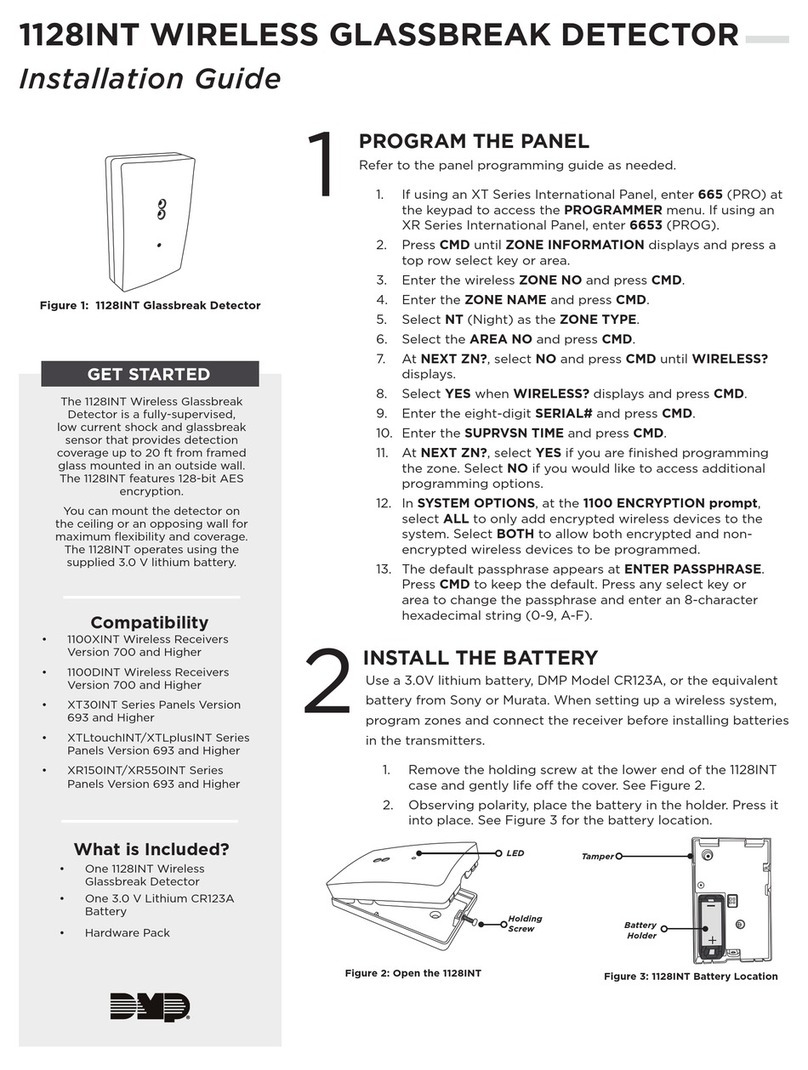
DMP Electronics
DMP Electronics 1128INT installation guide
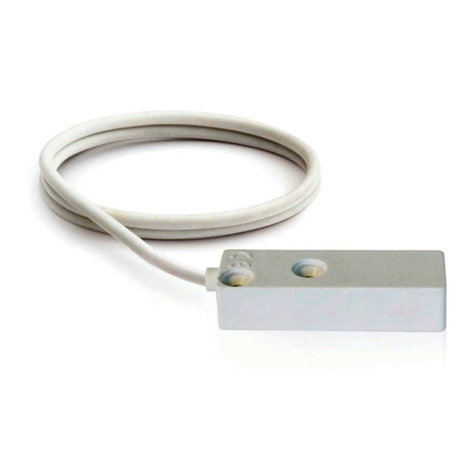
Ksenia
Ksenia KSI5CLV-02.00W installation manual
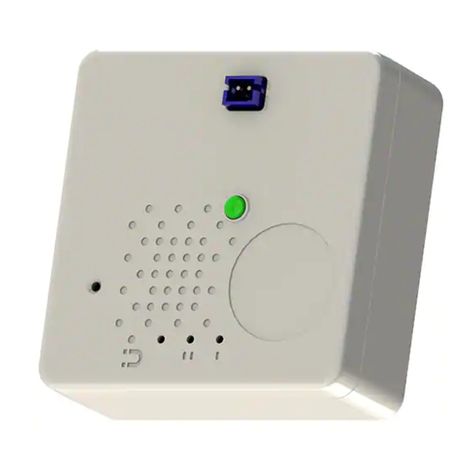
TEKTELIC Communications
TEKTELIC Communications LoRa IoT Smart Room Sensor user guide
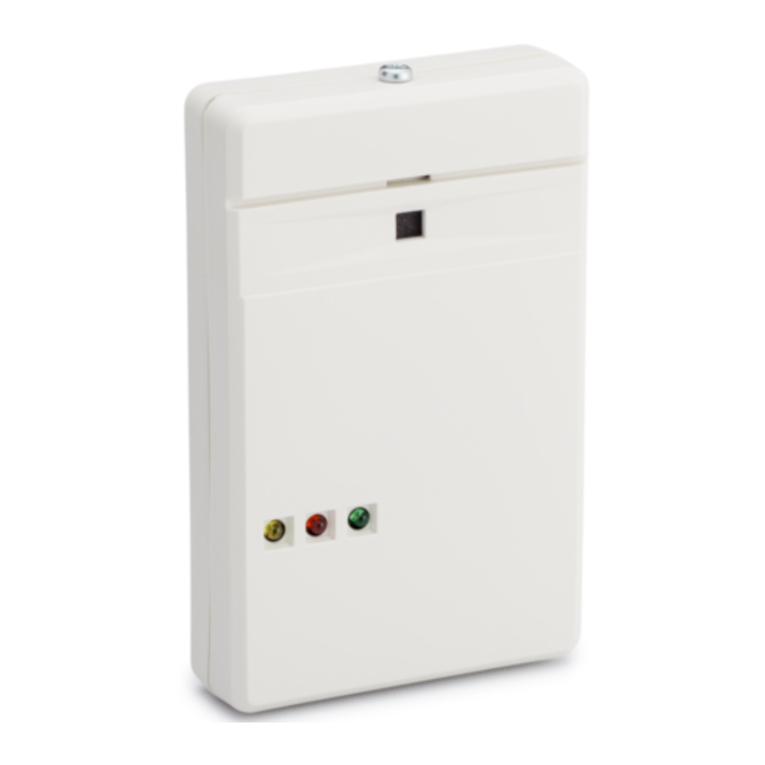
Honeywell
Honeywell FG-730 user manual
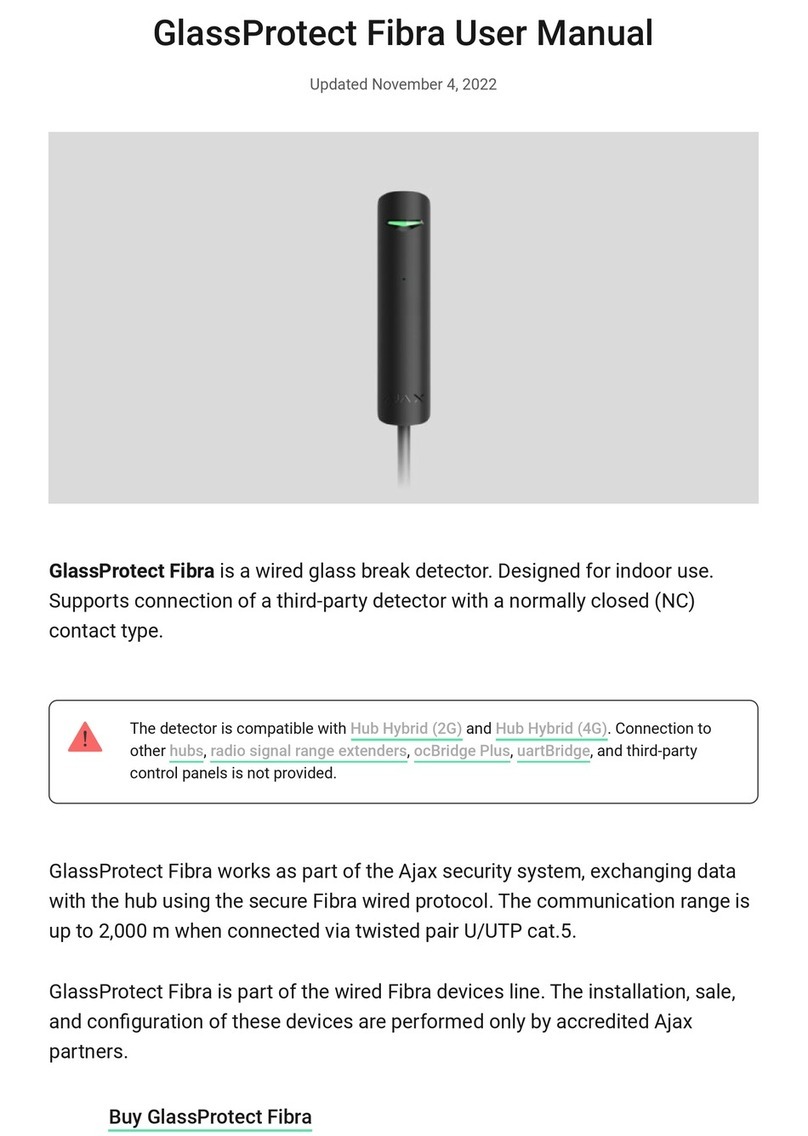
AJAX
AJAX GlassProtect Fibra user manual
Inficon
Inficon Sensistor Sentrac Service instructions
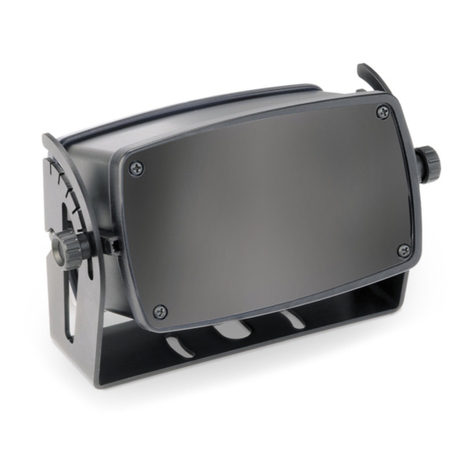
Bircher Reglomat
Bircher Reglomat Herkules 2E Original instructions
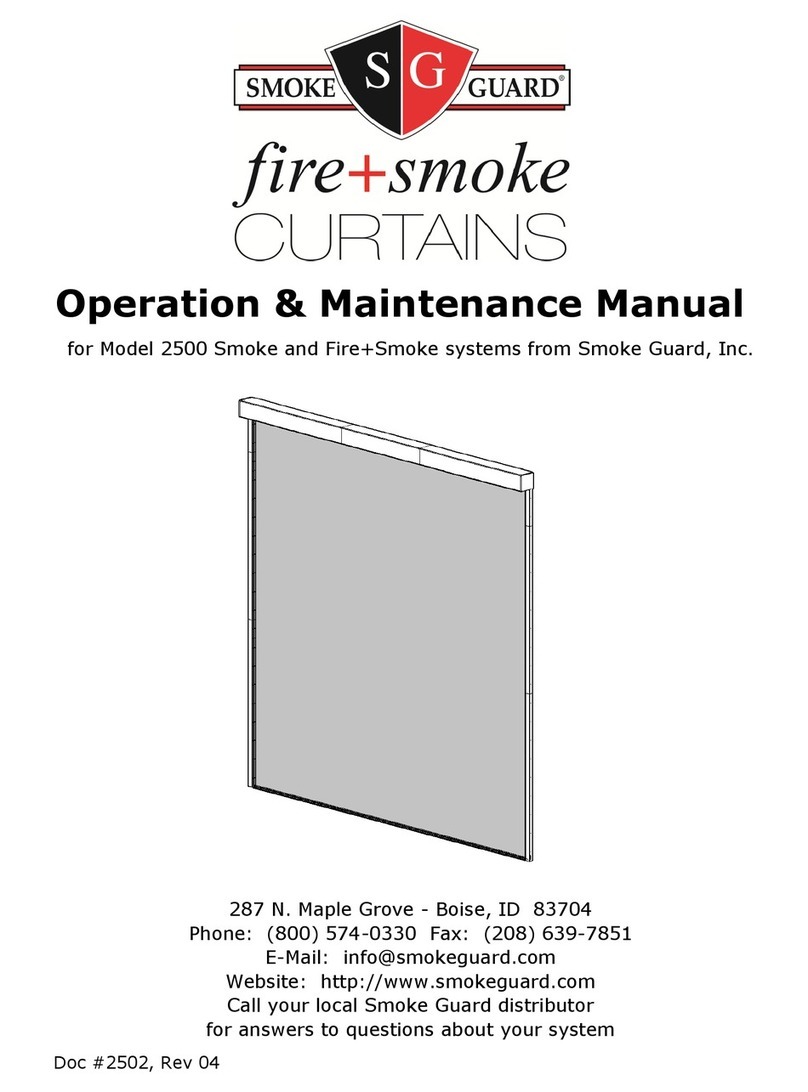
Smoke Guard
Smoke Guard M2500 Smoke Operation & maintenance manual
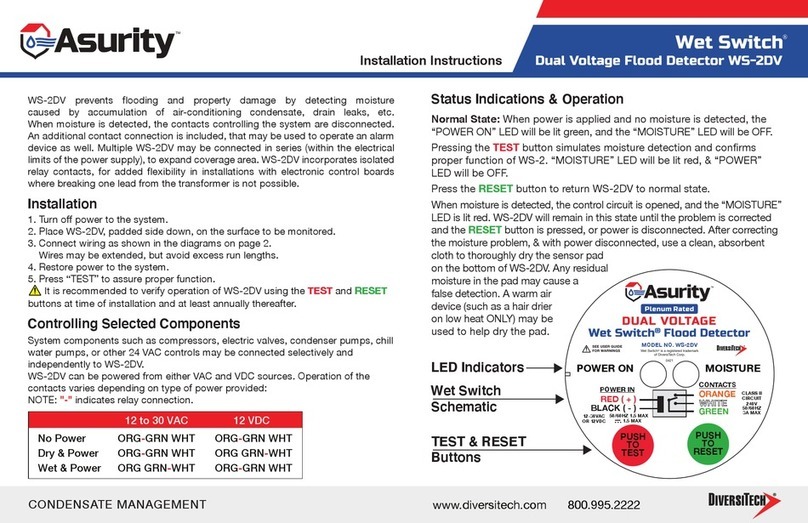
ASURITY
ASURITY Wet Switch WS-2DV installation instructions

Velleman
Velleman PIR416 user manual
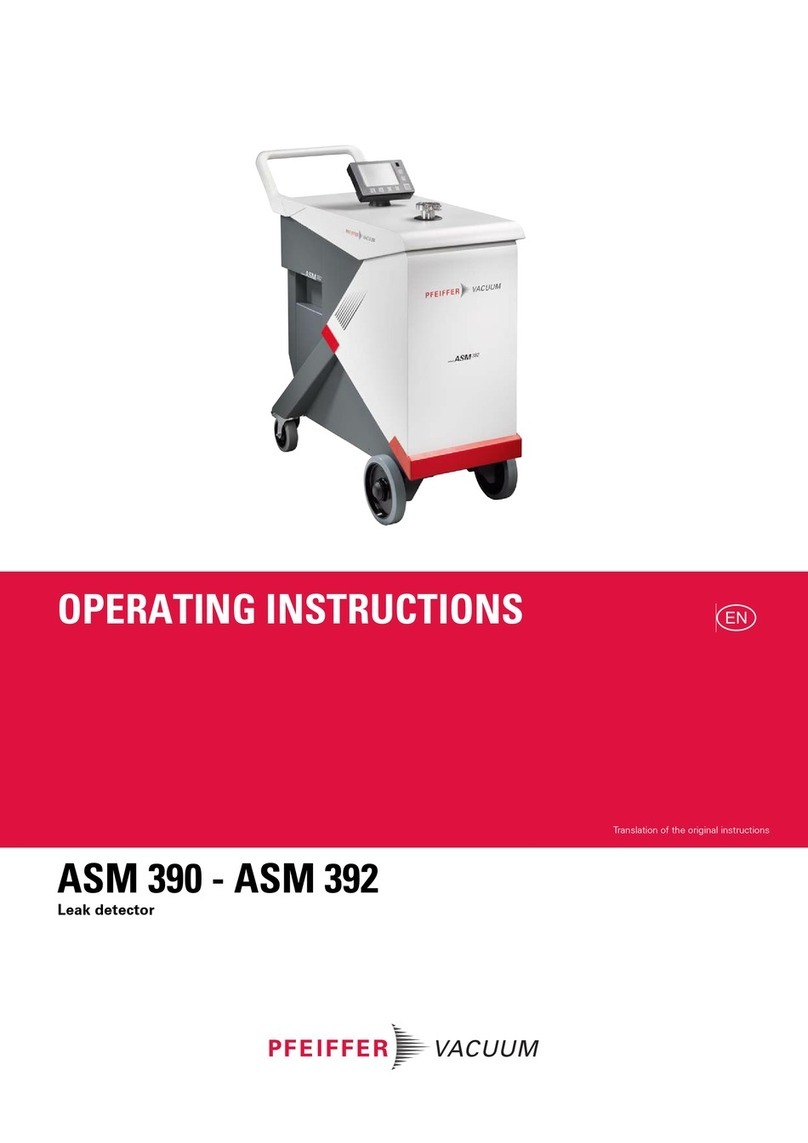
Pfeiffer Vacuum
Pfeiffer Vacuum ASM 390 operating instructions
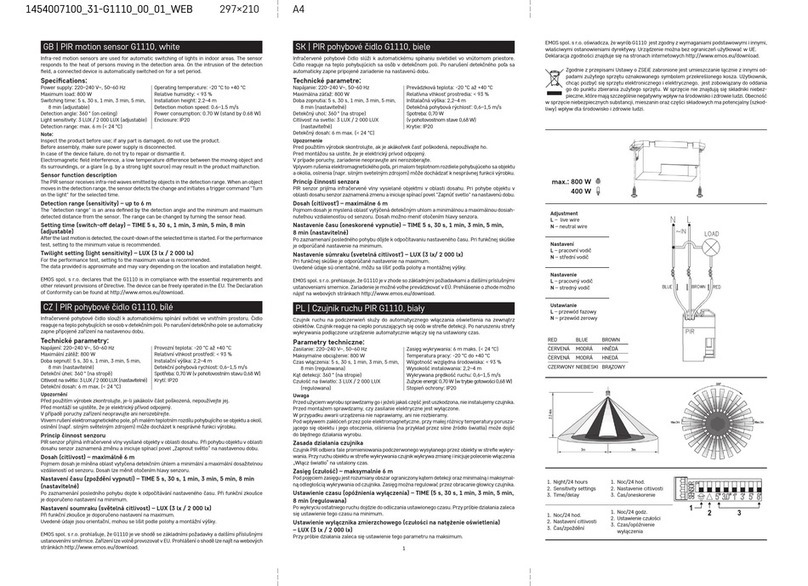
LEGRAND
LEGRAND EMOS G1110 manual

